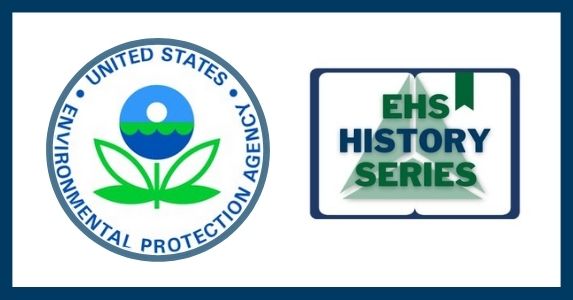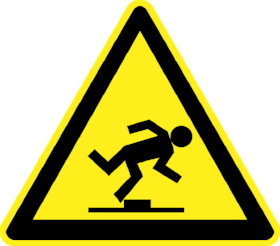EHS History: What Started the EPA & What It Means For Your Business
Concern over air and water pollution grew in the 1950s and 1960s as people realized that human activities may have a significant impact on the environment. Rachel Carson's groundbreaking 1962 book Silent Spring alerted the nation and government to the ecological dangers of agricultural pesticides. Environmental disasters like the 1969 Santa Barbara oil spill and the burning of Ohio's heavily polluted Cuyahoga River that same year sparked this concern. These and other events created a sense of urgency, prompting the formation of an advisory group to focus on pollution issues and the Congress to dictate the government's response to environmental issues, as courts started to penalize those responsible for pollution.
What Led to the Formation of the EPA
Congress established the National Environmental Policy Act (NEPA), requiring federal agencies to gather environmental statistics and submit environmental impact statements before moving forward with projects that might have an environmental impact. As part of NEPA, the Council on Environmental Quality (CEQ) was established as a branch of the Executive Office that oversees government environmental activities and collaborates with agencies and other White House offices on environmental and energy policies and projects.
In early 1970, President Richard Nixon delivered a state of the union address to Congress which included a 37-point segment dedicated to environmental issues. These points included:
- A request for national air quality standards and firm guidelines to lower automobile emissions.
- A request of $4 billion dollars for the improvement of water treatment facilities.
- A call for legislation to stop the dumping of wastes into the Great Lakes.
- Approval for a National Contingency Plan for the treatment of oil spills.
Around the same time, President Nixon established a council to explore how to arrange federal government pollution-reduction programs so that they could effectively fulfill the goals outlined in his environmental message. Following the council's recommendations, the president forwarded a proposal to Congress to combine many of the federal government's environmental duties under a single agency, the Environmental Protection Agency. The proposal was approved by the House and Senate that summer, and William Ruckelshaus, the agency's first Administrator, took the oath of office on December 4, 1970.
Starting with 5,800 employees and a budget of $1.4 billion, the EPA’s first initiatives were to enforce the Clean Water Act, enact a ban on the harmful pesticide DDT, and prosecute the corporations responsible for polluting the Cuyahoga River. Since then, the EPA has developed a strong, broad constituency that allowed it to continue to shape national policy in ways that were consistent with its mission: to preserve the environment by reducing pollution and therefore improve the quality of life in the United States. For more interesting environmental facts and stories, make sure to follow our upcoming EHS History series in our Resource Library.
What Do You Need to Know?
In the United States, there are many environmental regulations that apply to both large and small businesses. Clean air, water, resource conservation, emergency preparedness, pollution, toxic prevention and control, and other laws are all covered by the Environmental Protection Agency. The EPA ensures that companies have systems in place to keep the air and water cleaner when operations at that facility produce hazardous waste. EPA regulations and guidelines require that businesses emit as little pollution as possible, and fines and violations are imposed when an amount of waste that exceeds the EPA's thresholds is released into the atmosphere or environment.
Many organizations turn to environmental partners like Triumvirate for assistance due to shifting regulations and a limited environmental, health, and safety (EHS) compliance knowledge. We make it easier to accomplish regulatory reporting requirements on time and in compliance with highly experienced specialists and the latest technology, and EHS best practices.






